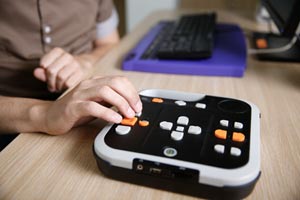Universal Design and Accessibility
Universal Design is the design of products & environments to be usable by all people, to the greatest extent possible, without the need for adaptation or specialized design.
~ The Center for Universal Design
Benefits of accessibility work and universal design
Just as the UPS delivery person and parents with strollers benefit from curb cuts and accessibility ramps (that were originally installed for wheelchair users), transcripts/captioning helps when English is not the presenter or viewer's first language. It also helps in situations where listening to sound is not an option.
People learn in different ways. Some learn by reading, others learn by hearing. If we present course materials in both forms then students can consume the content in the way that they best learn while strengthening their weaker learning techniques. An example would be reading a book along with an audio version.
Because Google is effectively blind and deaf, transcripts and alternative text help with search results (search engine optimization [SEO]).
How do people with disabilities use electronic resources?

- People with visual disabilities often use screen readers such as JAWS and NVDA on Windows, or VoiceOver on Macs to help them use computers, computer programs, and consume text on web pages. This technology allows them to navigate around the screen as well as list all the links or headings on a page so that they can get an overview of the page and know what action items they can use.
- Some users may be able to see, but they need text read to them. Text to speech applications, such as Natural Reader, help with this need.
- A large number of users with disabilities make use of a keyboard instead of a mouse to navigate the websites and programs they use. This often consists of tabbing (or Shift + Tab to go backward) through links on a webpage or using the Enter or Spacebar to 'click'. Arrow keys can also be used to move the mouse.
- Individuals with cognitive disabilities, as well as those that navigate with a keyboard or use a screen reader, need to be able to stop movement on web pages. This can be because the movement is a distraction, is prone to cause seizures, or needs to stop to allow time to navigate to the element before it disappears.
